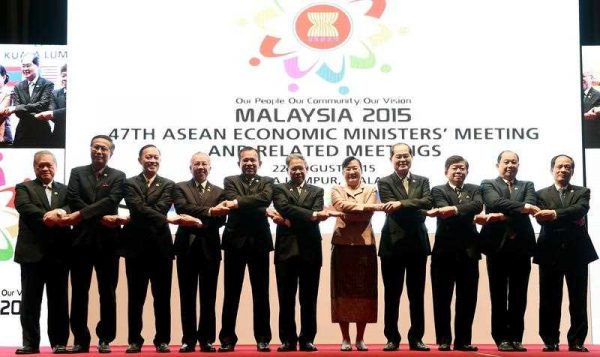India, poorer still, has returned to high growth, with its development ambitions poised to cast for it a new role in the world. And the ‘pivot’ to Asia, rhetorically at least, has re-asserted America’s regional strategic, political and economic claims.
The growth of Asia’s economic power and the potential that brings for projection of political and military power (though not inevitably as the example of Japan thus far attests) has thrust the region onto centre stage of changing great-power global politics.
But does the economic and political transformation of Asia inevitably portend the rivalrous carve-up of Asia into the big-power fiefdoms that much of what passes for security thinking about the geo-politics of the region these days presumes? The truth, of course, is more complicated and multi-textured.
Asia’s plurality is its defining characteristic. The vast Chinese civilisation on one side and the civilisation of the Indian sub-continent on the other, each embraces its own rich cultural, social and ethnic diversity around a dominant cultural stream. Indonesia is a nation that was built on the promise of bhinneka tunggal ika — ‘unity in diversity’. Malaysia is an ethnically bifurcated state. Think Asia, think heterogeneity — of cultures, ethnicity, religions, political systems, and economic circumstance. ASEAN and the ASEAN Economic Community that is its aspiration exemplify a union central to the international politics of Asia and built around Asia’s heterogeneity.
Since its birth during the Cold War, ASEAN has come to occupy a central and special political space in Asia that successive geo-political shifts have renewed, rather than challenged, by undermining the plausibility of big-power control: the bloody chastening of American ambition in Vietnam, the turn toward pragmatism in post-Mao China, the Soviet Union’s self-shrinkage into Russia, and the strategic reticence and economic stagnation of Japan.
The times may have changed but not in a way that fundamentally qualifies this remarkable geo-political reality. Viewed from a Southeast Asian perspective, China’s economic ascent and its recent military projection in the South China Sea may appear to have emboldened its current leaders but obviously not without constraint. To the extent that the American pivot is a response to this challenge, the choice for ASEAN will be decisive. If Sino–American rivalry escalates, ASEAN’s members could split into China-deferring and China-defying camps and weaken the group’s ability to lead. A peaceful balancing of power between Beijing and Washington could furnish space for ASEAN to operate independently between the two.
These challenges hardly augur the end of ASEAN. But the group’s centrality on matters of security and its creativity on economic issues are being questioned in two different ways: by Beijing’s strategy of assertion in the South China Sea, and by the pressure for inclusion represented by Washington’s pivot toward Southeast Asia.
In our lead essay this week, Amitav Acharya puts paid to the idea that the geo-politics of Asia and ASEAN’s place in them can be usefully viewed solely through the prism of the play between the big powers. While understanding the politics of great-power relations may be helpful in understanding ASEAN’s role in the region, he argues that there are alternative and more persuasive interpretations of what is happening in the world. At the heart of traditional thinking, he says, is the assumption of great-power primacy in maintaining international stability. None of them takes account of the influence of smaller, weaker players on great-power politics. ‘If the traditional perspectives were correct, ASEAN would have been doomed from its birth in 1967’.
ASEAN has, indeed, contributed much towards reducing and managing conflict in Southeast Asia. Acharya reckons that the experience of ASEAN turns traditional realism on its head. ‘Today’, he argues, ‘the phrase “great-power rivalry” is misleading. Significant and far-reaching cooperation exists at the regional and global levels. This is underpinned by a type of interdependence that did not exist a century ago. The term multipolarity is also out of date. It referred mainly to the number of actors and the distribution of power among them, but it said much less about the substance and quality of their interactions. The dominant feature of the world and Asia today is not multipolarity but multiplexity’.
According to Acharya, a multiplex world is one in which actors are not just great powers or nation states, but international institutions, non-governmental organisations, multinational corporations and transnational networks. It is a world that is distinguished by complex global and regional linkages. Trade, finance and transnational production networks were sparse in the pre-World War period of European economic interdependence. Now they are dense, including in Asia, and interdependence today goes beyond economics, covering the environment, disease, human rights and social media, for example. Multiplexity involves multiple layers of governance in which regionalism plays a key part. But regionalism today is open and overlapping. And, Acharya concludes, this is very different from the ‘nineteenth-century imperial blocs that fuelled great-power competition and war’.
Acharya’s case is not built around the naïve idea of a world in which violence and conflict are absent. That is palpably not the case. Power hierarchies remain, but the overall architecture is non-hegemonic. Global hegemons are in retreat. China is not going to replace the United States as global hegemon. In our multiplex world, there are powerful incentives to pluralistic and shared leadership among nation states. And that’s the world in which ASEAN’s prospects should be judged.
Peter Drysdale is Editor of the East Asia Forum.

